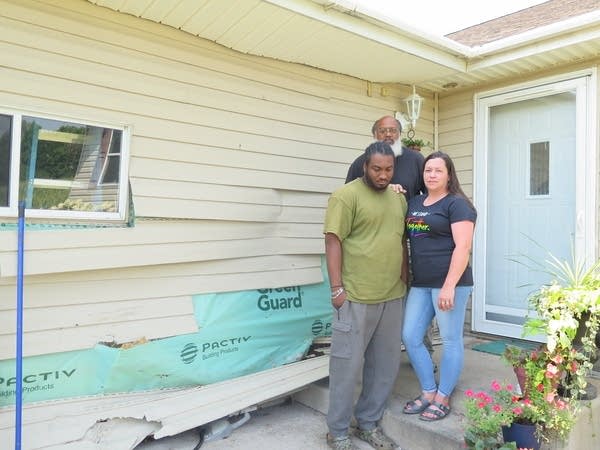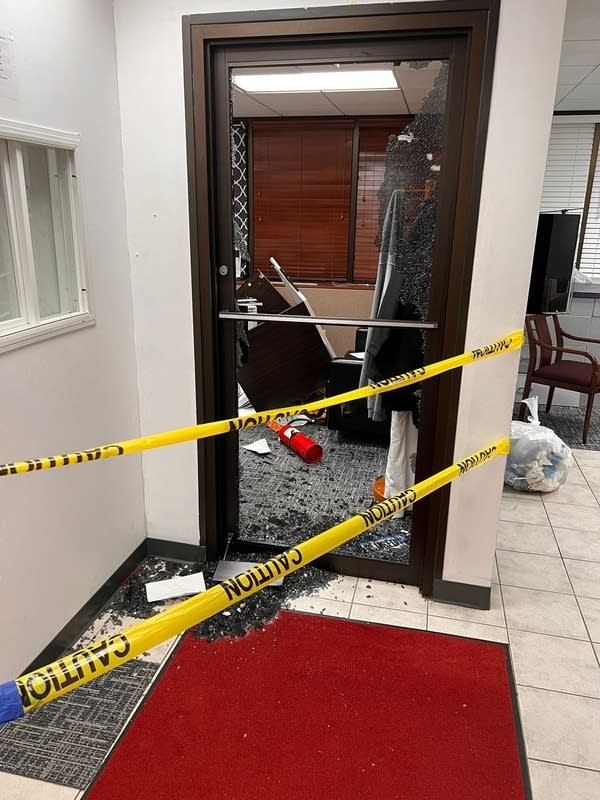Reports of hate crimes up in Minn., but proving bias remains a challenge

Go Deeper.
Create an account or log in to save stories.
Like this?
Thanks for liking this story! We have added it to a list of your favorite stories.
On Oct. 8, police in the central Minnesota city of Waite Park arrested Alyssa Holmberg after a disturbing encounter.
Court documents allege that Holmberg entered a family's apartment multiple times and screamed that she was going to kill them.
Police also reported that the 33-year-old Ogilvie woman chased a Somali American man who was walking outside, yelled racist comments and threw a jar of salsa at him. She also allegedly kicked an officer and made disparaging comments about Somali American members of the police force.
Holmberg faces several charges, including felony burglary and threats and gross misdemeanor assault motivated by bias.
Turn Up Your Support
MPR News helps you turn down the noise and build shared understanding. Turn up your support for this public resource and keep trusted journalism accessible to all.
Minnesota doesn't have a specific hate crime law. But it does allow prosecutors to pursue harsher penalties for certain crimes committed because of the victim's race, gender, religion or sexual orientation.
Reports of hate crimes have been on the rise in Minnesota and across the U.S. But advocacy groups say the actual number is likely much higher, and want action to address obstacles to reporting and prosecuting hate crimes.
In 2016, the Legislature passed an increased penalty for felony assault motivated by bias. However, as of Oct. 21, the enhanced charge had been filed fewer than two dozen times statewide, according to data from the Minnesota court system.
"The requirement for law enforcement to report a bias-related crime is quite different than proving that beyond a reasonable doubt in court,” said Stearns County Attorney Janelle Kendall, whose office charged Holmberg. It also prosecuted a central Minnesota man convicted of crashing a vehicle into the home of a multi-racial Cold Spring family last year.

Reports of hate crimes are up in part because law enforcement officers are required to report if they believe bias might have been a motivating factor in a crime, Kendall said.
"But sorting that all out to which crimes we can prove, and exactly the motivation of those crimes, is what we have to look at every time one of these things comes through the door,” she said.
Some crimes unreported
There were 238 bias-motivated incidents reported in Minnesota last year, according to the 2021 Uniform Crime Report released by the state Bureau of Criminal Apprehension. That number has risen for the past three years.
"We have seen, obviously, incidents of hate going up dramatically in our state and across the country over the past five or 10 years,” said Beth Gendler, executive director of St. Paul-based Jewish Community Action.
But Gendler said the numbers don’t tell the full story. Communities most often targeted by hate are less likely to report hate crimes, she said.
"There is a real lack of trust between communities that are most often targeted by hate and law enforcement,” Gendler said.

Advocacy groups want to make it easier for victims to report hate crimes, and better equip law enforcement to investigate those reports.
Many hate crimes go unreported, because the victims are afraid for their own safety or their family's, said Jaylani Hussein, executive director of the Council on American-Islamic Relations.
"We hear these cases all the time,” Hussein said. “Many of our community members talk about being driven off the road, being assaulted, spat at and for their own safety decided not to bring this case forward."
Better investigation
CAIR-MN urged state lawmakers to add the increased penalty for bias-motivated assault in 2016, after a woman at an Applebee's in Coon Rapids struck another woman with a beer mug for speaking Swahili.
But Hussein said some hate crimes are harder to detect. Suspects often deny they were acting out of bias, and don't always leave obvious evidence, he said.
“Not every hate crime leaves behind a swastika,” Hussein said.
Not all police have the training to look for evidence of a hate crime, such as postings on social media and pass it onto prosecutors, he said.
"If (prosecutors) don't have the evidence, it is hard for them to go beyond what they have in front of them,” Hussein said. “ So it is really up to law enforcement and responding officers to be able to do that fact gathering.”

In Cold Spring, Andrea Robinson urged authorities to charge Benton Beyer with a hate crime after he drove an SUV into her home while her children slept nearby.
"The impact that had on my children is going to be something that is irreversible,” Robinson said.
In September, a Stearns County jury convicted Beyer of bias-motivated stalking and assault and other charges. He is scheduled to be sentenced on Friday.
Robinson said smaller police departments often don't have the experience or resources to investigate a potential hate crime, without help from the FBI or state attorney general’s office.
"It's very hard to establish if there's more hate crimes, unless we have police departments doing their due diligence,” she said.

County Attorney Janelle Kendall said law enforcement officers in Stearns County take their role seriously, and frequently use search warrants and social media searches to investigate the motivation behind crimes.
“They want to seek the truth of why this happened, because that really matters to our victims, and it really matters to our community,” she said.
But prosecutors must weigh many factors when deciding how to charge a crime, Kendall said. The bias enhancement is not available for all crimes, she said, and it may not be the charge that carries the most severe penalty.
Being biased isn’t a crime, Kendall said. So prosecutors must prove not only that the suspect was biased, but that the crime was committed because of the victim’s actual or perceived status.
Seeking changes
A coalition of advocacy groups called Communities Combating Hate has been pushing for changes to Minnesota law to improve tracking and reporting of hate crimes.
They want to create a system to allow victims to report incidents of hate to the Department of Human Rights or trusted community organizations. And they want updated training for law enforcement in how to recognize and respond to such crimes.
Advocacy groups plan to push the proposal again in the upcoming legislative session. State Rep. Frank Hornstein, DFL-Minneapolis, was the House author of the bill, which failed to pass the last two years.
"This is an issue that affects so many people across the state,” Hornstein said. “People need to feel safe in their own communities, and they need to live lives that are free of violence and discrimination."
Hornstein said enhanced criminal penalties alone won't solve the underlying causes of hate. He said recent mass shootings in New York, South Carolina and Texas show the danger of hate that spills into violence.
“When we don't confront this, it is a disease that spreads,” he said. “That's why we need many, many tools to address it.”


